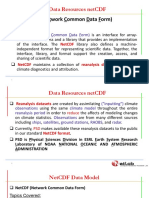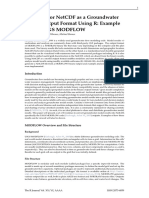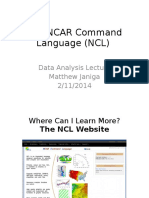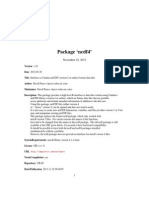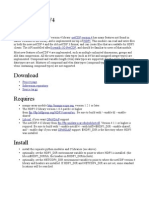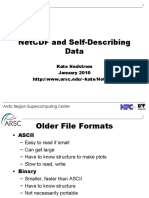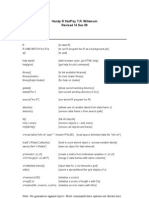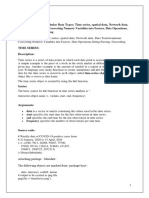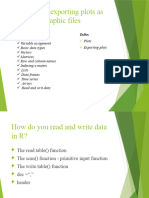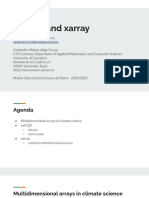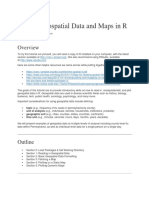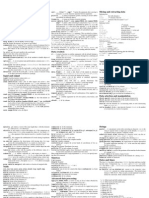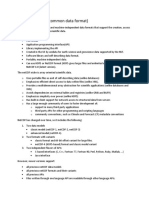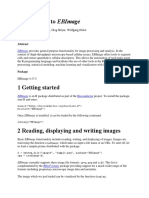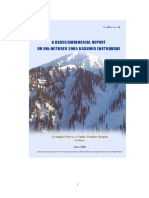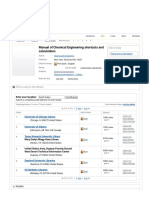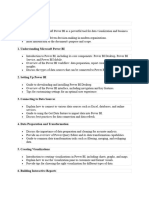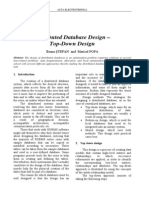0% found this document useful (0 votes)
329 views2 pagesNetCDF Data Handling in R Guide
This document discusses how to open and work with NetCDF data in R. It first reads in latitude, longitude, and time data from a NetCDF file and verifies the dimensions of the NDVI data array. It then replaces missing data values with NAs and extracts one year of the NDVI data to plot. The goal is to demonstrate how to read NetCDF data into R and access variables and attributes to begin analyzing and visualizing the data.
Uploaded by
Yaseen MuhammadCopyright
© © All Rights Reserved
We take content rights seriously. If you suspect this is your content, claim it here.
Available Formats
Download as PDF, TXT or read online on Scribd
0% found this document useful (0 votes)
329 views2 pagesNetCDF Data Handling in R Guide
This document discusses how to open and work with NetCDF data in R. It first reads in latitude, longitude, and time data from a NetCDF file and verifies the dimensions of the NDVI data array. It then replaces missing data values with NAs and extracts one year of the NDVI data to plot. The goal is to demonstrate how to read NetCDF data into R and access variables and attributes to begin analyzing and visualizing the data.
Uploaded by
Yaseen MuhammadCopyright
© © All Rights Reserved
We take content rights seriously. If you suspect this is your content, claim it here.
Available Formats
Download as PDF, TXT or read online on Scribd
/ 2

